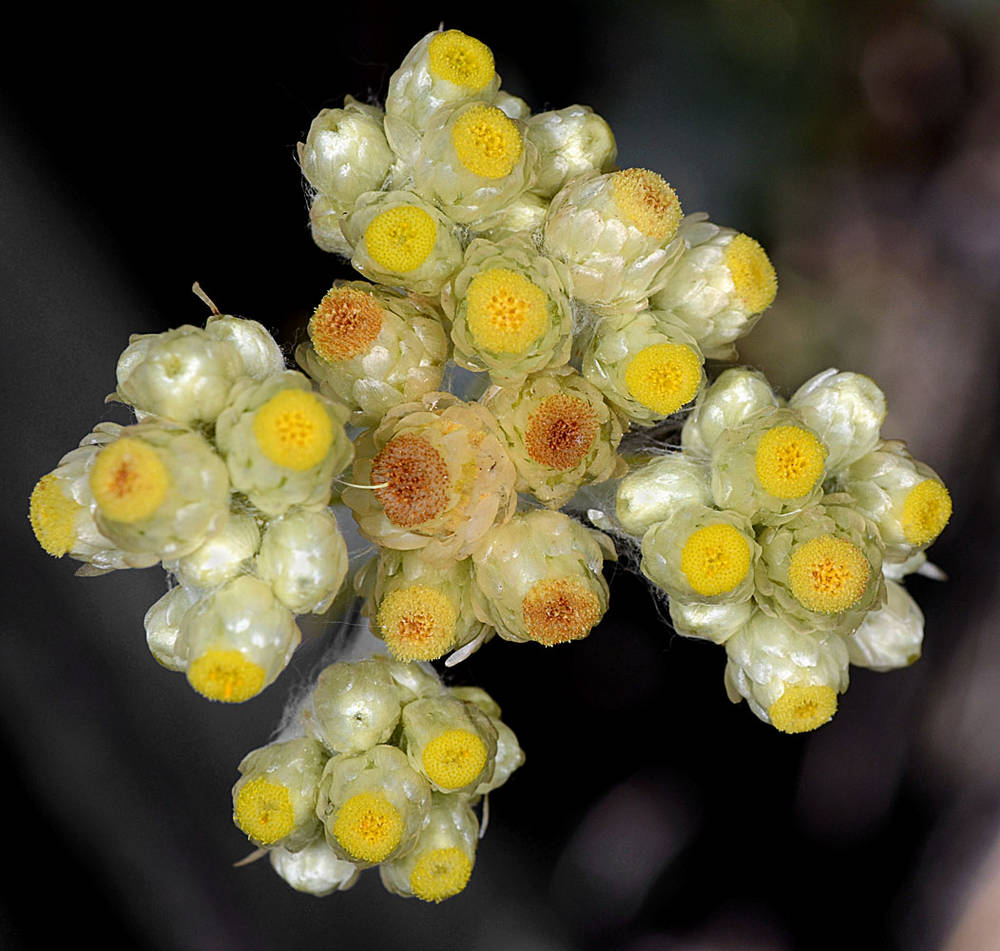Pseudognaphalium microcephalum
Pseudognaphalium
cudweed
1–several from base; erect to decumbent or prostrate; simple or branched; ± floccose-tomentose, glandular or not.
basal and cauline, or mostly cauline, alternate, linear to linear-lanceolate, lanceolate, oblong, or oblanceolate, gradually reduced distally, bases decurrent or not, sometimes clasping;
margins entire, 1-veined;
tips acute or obtuse;
surfaces one or both tomentose, sometimes adaxially stalked-glandular, sessile.
glomerules in corymb- or panicle-like arrays;
bracts present or not.
ovoid or hemispheric.
flat; smooth;
paleae 0.
in 3–10 series; erect in flower, spreading in fruit, chartaceous; inner equal, linear to lanceolate or ovate;
tips acute or obtuse; outer ± equal or gradually shorter; ovate to triangular;
surfaces glabrous or tomentose.
cylindric or fusiform;
surfaces smooth or minutely papillate, pappi of 10–12 equal, deciduous bristles.
disciform.
pistillate;
corollas red- or yellow-tipped.
bisexual;
corollas tubular, linear, yellow to red, minutely 5-lobed.
Pseudognaphalium microcephalum
Pseudognaphalium
Worldwide. ~100 species; 5 species treated in Flora.
Kenton Chambers


